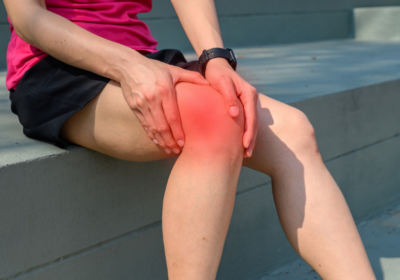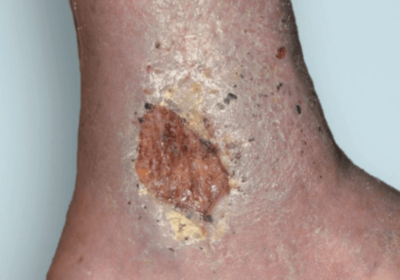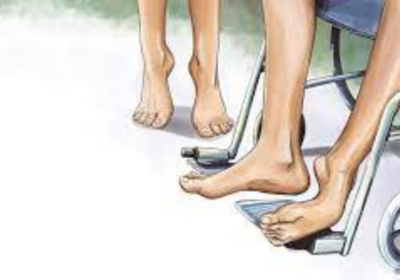AYURVEDA FOR DIABETIC NEUROPATHY: RESTORING BALANCE AND VITALITY
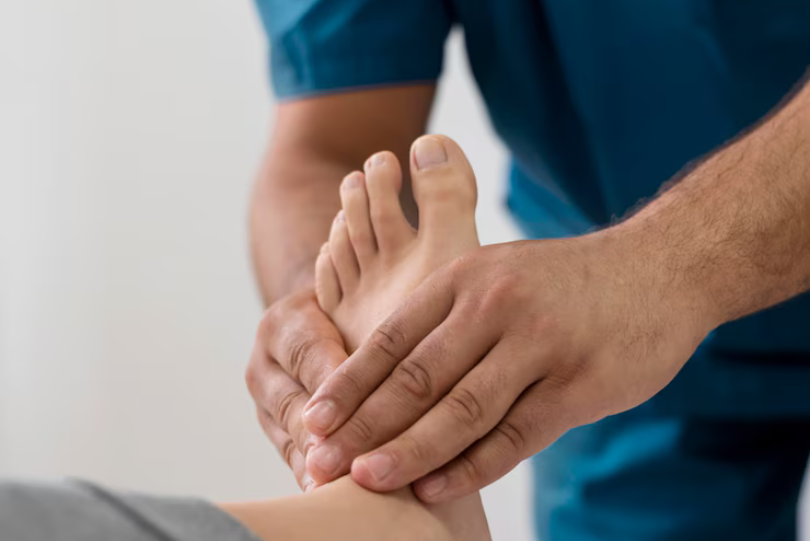
Diabetic neuropathy refers to nerve damage that arises from prolonged high blood sugar levels (hyperglycemia) in individuals with diabetes mellitus. This condition mainly affects the peripheral nerves, particularly in the hands and feet, but may also involve the autonomic, motor, or cranial nerves, resulting in various sensory and functional difficulties.
TYPES AND CLINICAL SYMPTOMS OF DIABETIC NEUROPATHY:
There are four main types of diabetic neuropathy, each with distinct clinical symptoms:
1. Peripheral Neuropathy(Distal Symmetric Polyneuropathy):
- It is the most common type of diabetic neuropathy.
Symptoms:
- Pain: Burning, stabbing, electric shock-like pain, usually worse at night.
- Tingling or numbness: Often begins in the toes and progresses upward(stocking-glove pattern).
- Loss of sensation: Inability to feel temperature, pain, or touch, increasing risk of foot injuries.
- Muscle weakness: Especially in the feet and ankles.
- Poor coordination or balance, especially in the dark.
Complications:
- Foot ulcers due to unnoticed injuries
- Charcot joint(progressive degeneration of a weight bearing joint)
- Amputations in severe cases
2. Autonomic Neuropathy:
Affects nerves that control involuntary functions, such as digestion, heart rate, and blood pressure.
Symptoms:
Cardiovascular:
- Resting tachycardia(high resting heart rate)
- Orthostatic hypotension(drop in BP when standing)
- Exercise intolerance
Gastrointestinal:
- Gastroparesis(delayed stomach emptying, nausea, bloating, early satiety)
- Constipation or diarrhoea
- Faecal incontinence
Genitourinary:
- Bladder dysfunction: Incomplete emptying, urinary retention
- Erectile dysfunction in men
- Vaginal dryness in women
Sweat glands:
- Decreased sweating(anhidrosis) in feet and legs.
- Excessive sweating in the upper body or after meals(gustatory sweating).
Pupillary involvement:
- Poor adaptation to darkness.
- Difficulty with night vision.
3. Proximal Neuropathy(Diabetic Amyotrophy or Lumbosacral Radiculoplexus Neuropathy):
- This type is less common and usually affects older adults with type 2 diabetes.
Symptoms:
- Sudden, severe pain in the hip, thigh or buttock (usually one side).
- Muscle weakness in the thigh or leg.
- Difficulty rising from a sitting position or climbing stairs.
- Weight loss(often rapid and significant).
- Reflex changes (eg: Absent knee jerk reflex).
Usually improves over months to years, but can cause significant disability.
4. Focal Neuropathy(Mononeuropathy):
Sudden weakness or pain in a single nerve or group of nerves, usually affecting the head, torso, or leg.
Cranial Nerve Involvement:
- CN III(Oculomotor Nerve): Sudden onset of double vision and drooping eyelid with preserved pupil reflex(pupil sparing).
- CN VI(Abducens Nerve): Lateral gaze palsy diplopia
Peripheral Involvement:
- Pain in specific areas like the lower back, chest, abdomen, or front of thigh.
- Wrist drop or foot drop(due to radial or peroneal nerve palsy)
- Carpal tunnel syndrome(median nerve entrapment) is also common.
DIAGNOSIS OF DIABETIC NEUROPATHY:
1. Clinical history and symptom analysis:
- Do the clinical evaluation thoroughly:
- Sensory symptom: Numbness, tingling(pins and needles), burning, or pain, especially in feet and hands.
- Motor symptoms: Muscle weakness, imbalance or foot deformities.
- Autonomic symptoms: Dizziness, digestive issues, sexual dysfunction, bladder problems, or heart rate variability.
- The pattern is often “stocking gloves”, starting from the toes and moving upward.
2. Physical Examination:
- Reflexes(especially ankle reflexes)
- Vibration sensation(using a tuning fork)
- Pinprick and temperature sensation
- Position sense(proprioception)
- Muscle strength and tone
- Foot inspection for ulcers, deformities, or calluses
3. Diagnostic Tests:
A. Blood Test:
To rule out or confirm other causes of neuropathy:
- HbA1c: Long-term blood sugar control
- Vitamin B12 Levels
- Thyroid Function (TSH)
- Kidney and liver function tests
- Autoimmune or inflammatory markers(like CRP, ESR etc.)
B. Neurological Tests:
1. Monofilament Test:
- A 10 g Semmes-Weinstein monofilament is pressed on the foot.
- If the patient cannot feel the filament, it suggests loss of protective sensation and risk of ulcers.
2. Vibration Prick test:
- A 128 Hz tuning fork is used.
- Reduced perception indicates large fibre neuropathy.
3. Thermal or pinprick test:
- Tests small fibre function.
4. Nerve Conduction Studies(NCS):
- Measures speed and strength of signals in nerves.
- Slowed conduction velocity or reduced amplitude indicates neuropathy.
- Useful for larger fibre involvement.
5. Electromyography(EMG):
- Evaluates muscle electrical activity:
- Helps in differentiating between nerve and muscle disease.
6. Quantitative sensory testing:
- Measures threshold to vibration, heat, or cold.
- Assess small and larger fibre involvement.
C. Autonomic Testing:
- Heat rate variability(Ewing’s tests)
- Postural blood pressure changes(Orthostatic hypotension)
- Sweat testing(QSART or thermoregulatory sweat test)
- Gastrointestinal tests(eg: gastric emptying study)
- Bladder function tests
4. Diabetic Foot risk assessment:
- Checking for ulceration risk using monofilament and visual inspection.
- Vascular assessment(peripheral pulses, doppler studies if needed).
DIFFERENTIAL DIAGNOSIS OF DIABETIC NEUROPATHY:
1. Alcoholic Neuropathy:
- Cause: Chronic alcohol consumption.
- Indication: History of alcohol abuse, nutritional deficiencies(B1, B6, B12).
- Symptoms: Similar to diabetic neuropathy, but with more prominent muscle wasting.
2. Vitamin deficiency Neuropathy:
Vitamin B12 deficiency:
- Indication: Anaemia, glossitis, cognitive changes
- Symptoms: Sensory Ataxia, paresthesia, positive Romberg sign
- Other vitamins: B1, B6, E
3. Hypothyroid Neuropathy:
- Indication: Fatigue, weight gain, constipation, cold intolerance
- Neuropathy type: Often entrapment(like carpal tunnel) or distal polyneuropathy
4. Uremic Neuropathy:
- Cause: Chronic kidney disease
- Indication: Elevated creatinine, GFR<30, dialysis history
- Symptoms: Symmetric sensory motor neuropathy
5. Chronic Inflammatory Demyelinating Polyneuropathy(CIDP):
- Indications: Progressive weakness over 8+ weeks, large-fiber involvement, areflexia
- NCS/EMG: Demyelination pattern
- Note: CIDP may be mistaken for diabetic neuropathy, but it is treatable with immunotherapy.
6. Hereditary Neuropathies(eg: Charcot Marie tooth disease):
- Indications: Family history, high arches(pes cavus), hammer toes.
- Onset: Often in adolescence or early adulthood.
7. Toxic Neuropathy:
- Causes: Drugs(eg: Chemotherapy-vincristine, cisplatin), heavy metals(arsenic lead)
- Indications: Exposure history, sudden onset after medication
8. HIV or AIDS associated Neuropathy:
- Indication: HIV infection, immunosuppression
- Pattern: Distal symmetric polyneuropathy or inflammatory neuropathy
9. Guillain Barre Syndrome(GBS):
- Examples: Carpal tunnel syndrome, tarsal tunnel syndrome
- Indication: Focal symptoms, weakness, or sensory loss in nerve distribution.
10. Entrapment Neuropathies:
- Examples: Carpal tunnel syndrome, tarsal tunnel syndrome
- Indication: Focal symptoms, weakness or sensory loss in nerve distribution.
11. Amyloidosis:
- Weight Loss, autonomic symptoms, proteinuria, cardiac involvement.
- Neuropathy: Painful small fibre or autonomic neuropathy.
COMPLICATIONS OF DIABETIC NEUROPATHY:
If not managed well, diabetic neuropathy leads to a wide range of complications which can be disabling or even life-threatening.
Given below are the complications associated with diabetic neuropathy based on the type of nerve involvement.
1. Foot complications (most common and serious):
- Diabetic neuropathy often affects the feet, especially in peripheral neuropathy.
a. Loss of sensation (numbness):
- Leads to unnoticed injuries like cuts, blisters, or burns.
- Since the person may not feel pain, wounds can go untreated and worsen.
b. Foot ulcers and infections:
- Minor injuries can become infected due to poor healing.
- Decreased blood flow (due to coexisting peripheral vascular disease) delays wound healing.
- Infections can spread to deeper tissues and bones (osteomyelitis).
c. Gangrene:
- Untreated infections can lead to tissue death.
- May require surgical removal(amputation) of toes, feet, or part of the leg.
d. Charcot Foot:
- Weakening of foot bones due to nerve damage.
- Causes fractures and deformity, leading to a “rocker bottom” appearance.
- May result in severe disability if untreated.
2. Autonomic Nervous System Complications:
Involves damage to nerves that control involuntary functions like digestion, heart rate and bladder function.
a. Gastrointestinal complications:
- Gastroparesis: Delayed stomach emptying causing bloating, nausea, vomiting, and unstable blood sugar levels.
- Constipation or diarrhoea: Unpredictable bowel habits due to intestinal motility.
- Faecal incontinence in severe cases.
b. Cardiovascular autonomic neuropathy:
- Resting tachycardia(elevated heart rate at rest).
- Orthostatic hypotension: Sudden drop in BP when standing-dizziness, fainting.
- Silent myocardial infarction: Heart attacks without typical chest pain symptoms.
c. Bladder and urinary issues:
- Neurogenic bladder: Incomplete emptying, urinary retention.
- Increased risk of urinary tract infections(UTI).
- Overflow incontinence: Leakage of urine from a full bladder.
d. Sexual dysfunction:
- Erectile dysfunction in men.
- Reduced vaginal lubrication, arousal and orgasm difficulties in women.
e. Abdominal Sweating:
- Excessive sweating at night or while eating(gustatory sweating).
- Reduced sweating in hands/feet increases the risk of skin cracks and infections.
3. Peripheral Complications:
- Due to sensorimotor neuropathy affecting hands and feet.
a. Muscle weakness and imbalance:
- Muscle atrophy in hands and feet due to motor nerve damage.
- Increase risk of falls and injuries.
b. Loss of Coordination(Ataxia):
- Especially when both position sense and motor function are impaired.
c. Chronic Pain(neuropathic pain):
- Burning, stabbing, or electric shock-like sensations.
- Severe pain may interfere with sleep and mental well-being.
4. Psychological and Quality of Life complications:
a. Depression and anxiety:
- Chronic pain and reduced mobility can severely affect mental health.
b. Sleep disturbances:
- Neuropathic pain often worsens at night.
c. Loss of independence:
- Severe neuropathy can impair daily functions like walking, dressing, or toileting.
5. Increased risk of falls and fractures:
- Balance issues due to loss of position sense and muscle strength.
- Orthostatic hypotension also contributes to dizziness and falls.
- Especially dangerous in elderly patients with diabetes.
ROLE OF AYURVEDA IN DIABETIC NEUROPATHY:
1. PODI KIZHI(CHOORNA PINDA SWEDAM):
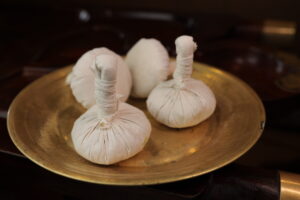
Podi Kizhi is a traditional ayurvedic Sudation therapy(swedana) involving the application of heated herbal powders tied in a cloth pouch(Kizhi) to the body. Kolakulathadi Choornam(medicinal powder) is normally used in our hospital for preparing Kizhi. It is usually done in about 30-45 minutes.
Benefits of Podi kizhi:
- It improves peripheral circulation.
- It helps in nerve rejuvenation.
- It aids in pain relief.
- It reduces numbness and tingling.
- It relieves muscle spasms and weakness.
- It reduces swelling and inflammation.
- It improves sleep and quality of life.
2. ELAKIZHI(PATRA PINDA SWEDAM):
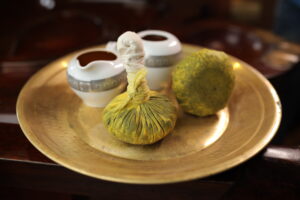
Elakizhi is a traditional ayurvedic therapy involving sudation(sweating) using heated bundles of medicinal leaves. These bundles, called Kizhis, are prepared using specific herbal leaves, tied in a cotton cloth, and then heated in medicated oils before being applied to the body.
The medicinal leaves used depend on the condition, but typically include:
- Eranda(castor leaves)
- Arka(Calotropis)
- Tamarind leaves
- Nirgundi(vitex nigundo)
- Lemon slices
- Garlic
- Coconut gratings
The leaves are chopped, mixed with grated coconut, lemon, and rock salt and sauted in medicated oil like Kottamchukkadi tailam, dhanwantharam thailam, or murivenna.
Benefits of Ela kizhi in diabetic neuropathy:
- It improves circulation.
- It relieves pain and tingling.
- It removes ama(toxins).
- It strengthens muscles and nerves.
- It reduces stiffness.
- It improves mobility.
3. UDWARTHANAM:
Udwarthanam is a specialized ayurvedic treatment involving dry or medicated powder massage performed in a direction opposite to hair growth. It is a deeply therapeutic and detoxifying technique used primarily for metabolic disorders, obesity and neuromuscular conditions.
Either Kolakulathadi or Kolakulathadi with triphala is used for the same. 30-minute- one-hour sessions are usually performed.
Benefits of Udwarthanam:
- It improves the peripheral circulation.
- It stimulates nerve endings.
- It reduces Ama(toxins) and Kapha meda dushti.
- It balances Vata dushti.
- It helps in muscle toning and strengthening.
- It helps in detoxification and lymphatic drainage.
- It helps in metabolic regulation.
4. DHARA:
Dhara is a traditional ayurvedic therapeutic procedure where a steady stream of medicated liquid(such as herbal decoction, milk, buttermilk, or oil) is poured continuously over a particular part of the body or the whole body from a specific height.
Dhanyamla Dhara and Kashyadhara are usually found beneficial.
Dhanyamla Dhara:
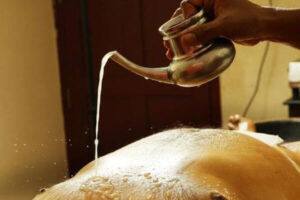
Dhanyamla dhara is a specialized ayurvedic therapy where fermented medicinal liquid (dhanyamla) is poured in a continuous stream over the body or affected parts. It is especially beneficial in conditions caused by vata and kapha imbalances, including diabetic neuropathy.
- During therapy, the warm dhanyamla is poured rhythmically over the whole body or affected limbs for 30-45 minutes.
- It is often followed by a mild abhyanga.
Kashaya Dhara:
Kashaya Dhara is an ayurvedic therapeutic procedure in which medicated decoctions are poured in a continuous stream over the body or a specific area. It is especially in conditions involving Vata and Pitta imbalance, which are typically involved in diabetic neuropathy. Usually, Dashamoola Kashaya dhara is effective in diabetic neuropathy.
Benefits of Dhara:
- It reduces inflammation and pain.
- It improves circulation.
- It detoxifies the body.
- It restores the nerve functions.
- It moisturizes and softens muscles.
- It manages secondary complications.
5. NADI SWEDAM (LOCAL STEAM):
Nadi swedam is a type of localized steam(sudation therapy) in ayurveda, using a tube or pipe(nadi) to direct medicated steam onto specific body parts. It is mostly used in the management of neurological, musculoskeletal, and circulatory disorders, including diabetic neuropathy.
Usually, in our hospital, Dashamoola kashayam is used to produce steam. Normally steam is done for about 10-20 minutes.
Benefits of Nadi Swedam:
- It improves circulation.
- It reduces pain and numbness.
- It helps in muscle relaxation.
- It supports nerve function.
- It removes toxins.
- It reduces swelling and inflammation.
6. LEPAM:
Lepam is a traditional ayurvedic treatment procedure where a medicated paste is applied externally to a specific body part or the whole body, depending on the condition. Usually, Grahadhoomadi or Rasnadi Choornam is used to apply the lepam. The paste is warmed and is retained for 30 minutes to one hour or until it dries. It is gently removed using warm water.
Benefits of Lepam:
- It is beneficial for burning sensations.
- It improves circulation.
7. VASTHI:
Vasthi refers to medicated enema therapy used to balance vata dosha, particularly in the colon. It is considered the “Ardha Chikitsa”(half of the entire treatment) in ayurveda due to its powerful systemic effects.
Procedure of Vasthi:
1. Poorva Karma(pre procedure):
a. Deepana Pachana(digestive stimulation):
- It is administered to remove toxins.
- Hinguashtaka choornam, Panchakola choornam, trikatu choornam can be used for the same.
b. Snehana:
- Internal Oleation(snehapana): Giving medicated ghee(Mahatiktaka Ghrita, Ksheerabala ghrita) for 3-5 days.
- External Oleation: Full body massage with warm medicated oil.
c. Swedana(Sudation):
- Steam therapy: To liquify doshas and facilitate their movement to the colon.
2. Pradhana Karma(Main Procedure):
- Patient lies on the left lateral position with the left leg straight and the right leg flexed at the knee and hip.
- Use a sterile enema syringe or disposable catheter/syringe.
- Oil/decoction is gently administered through the anus into the rectum.
- The patient should retain it till the patient feels an urge to void.
3. Paschat Karma(Post procedure care):
- Light, warm and easily digestible food(manda, yusha, peya)is recommended.
- Avoid spicy, oily, fermented, or heavy food for at least 1-2 days.
- Monitor for signs like: Relief in symptoms, timely evacuation, lightness in the body.
- Avoid physical exertion, cold exposure, sexual activity, and mental stress.
There are two main types:
1. Anuvasana Vasthi: Oil-based enema, nourishing and vata pacifying.
2. Niruha(Asthapana) Vasthi: Decoction-based enema, cleansing and detoxifying.
Combination courses of both types are typically used for effective results.
Common Basthi medicines for Diabetic neuropathy:
- Anuvasan Vasthi: Ksheerabala taila, Dhanawanthara taila, etc.
- Niruha Vasthi: Dashamoola Kashayam, Eranda moolam.
Benefits of Vasthi:
- It balances Vata dosha.
- It helps in nerve nourishment.
- It helps in the lubrication of channels.
- It cleanses ama and toxins.
- Improves sensory and motor function.
- It improves circulation.
- It aids in relief.
ROLE OF PHYSIOTHERAPY IN DIABETIC NEUROPATHY:
1. Strengthening Exercises:
Techniques:
- Targeted strengthening exercises for the lower limbs(quadriceps, hamstrings, calves, and hip muscles) to improve muscle strength and endurance.
- Resistance bands and free weights are often used for progressive resistance training.
Benefits:
- Improves muscle tone and strength, which may be weakened due to a lack of proper nerve function.
- Enhances walking ability and balance, reducing the risk of falls.
- Helps in reducing fatigue and improving stamina for daily activities.
2. Stretching and Range of motion exercises:
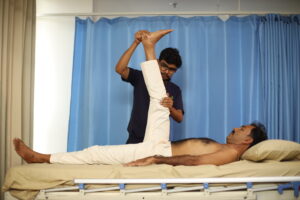
Techniques:
- Passive and active stretching exercises for joints, especially the ankles and feet.
- Joint mobilization techniques are used to maintain flexibility and improve the range of motion.
Benefits:
- Helps prevent contractures and stiffness, which are common in diabetic neuropathy.
- Maintains and increases joint flexibility, improving overall mobility and reducing discomfort.
3. Balance Training:
Techniques:
- Standing on one leg or using balance boards and wobble cushions to improve proprioception(awareness of body position in space).
- Walking exercise on uneven surfaces to stimulate real-life conditions.
- Tai chi and yoga-based movements can be integrated for improving coordination and balance.
Benefits:
- Improves balance and coordination, reducing the risk of falls.
- Enhances gait stability, which may be affected due to neuropathic changes in legs and feet.
4. Gait Training:
Techniques:
- Re-education of gait patterns using assistive devices like a walking cane, orthotics, or braces if necessary.
- Use of treadmill or overground walking exercises with visual or verbal feedback to improve walking mechanics.
Benefits:
- Restores a more normal gait pattern and reduces abnormal walking patterns caused by neuropathy(eg, foot drop).
- Improves functional walking, making daily activities like shopping, climbing stairs, and walking less challenging.
5. Desensitization Techniques:
Techniques:
- Tactile desensitization: Involves exposing the feet to different textures(eg: soft brushes, cloths, etc.) to improve sensory feedback from the feet.
- Vibration therapy or using tools like a vibrating massager on the feet to stimulate nerve endings.
Benefits:
- Helps improve sensory awareness in the feet, reducing the risk of injuries like cuts and blisters.
- Alleviates pain, tingling, and numbness in the feet.
6. Electrical Stimulation:
Techniques:
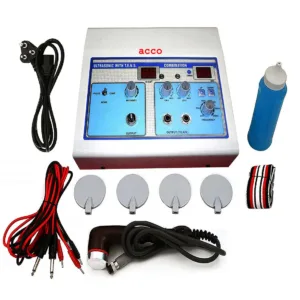
Transcutaneous electrical nerve stimulation(TENS) or neuromuscular electrical stimulation(NEMS) to reduce pain and stimulate muscles.
Benefits:
- Reduces the pain associated with diabetic neuropathy by stimulating the nerves and blocking the pain signals.
- Enhances circulation to affected areas, which is often impaired in diabetic neuropathy.
7. Foot care and education:
- Foot inspection and preventive measures like avoiding tight shoes, nail trimming, and moisturizing techniques.
- Use of custom orthotics to alleviate pressure and correct deformities like bunions and hammertoes.
Benefits:
- Prevents common foot complications, such as ulcers, infections and deformities.
- Reduce the risk of injury or infection, which is a significant concern for diabetic patients due to poor circulation and neuropathy.
8. Postural Training:
Techniques:
Postural exercises to improve sitting, standing, and lying posture, especially for people who are sedentary or have difficulty with movement.
Benefits:
- Helps reduce the strain on the muscles and joints, particularly the lower back and legs.
- Encouraging the proper alignment and prevents musculoskeletal pain, which may be exacerbated by poor posture.
9. Aerobic Exercises:
Techniques:
- Activities such as walking, cycling, or stationary biking to increase heart rate and improve cardiovascular fitness.
- Aerobic exercises may be one at a low to moderate intensity based on the patient’s tolerance.
Benefits:
- Improves cardiovascular health, which is essential for diabetic patients.
- Enhances blood circulation and reduces the risk associated with prolonged sedentary behaviour, such as blood clots and poor circulation.
Benefits of physiotherapy for diabetic neuropathy:
- Pain management: Physiotherapy helps in the reduction of pain through various modalities, including heat/cold therapy, massage, and electrical stimulation.
- Improved quality of life: Physiotherapy programs can restore function and independence, improving the quality of life for diabetic neuropathy patients.
- Management of comorbidities: Physiotherapy helps manage other diabetes related conditions like hypertension, obesity, and cardiovascular issues.
ROLE OF YOGA IN DIABETIC NEUROPATHY:
Asanas(postures):
- Tadasana(Mountain pose): Improves posture and blood flow.
- Pawanmuktasana: Excellent for joint mobility and nerve stimulation.
- Viparita Karani(legs up the wall pose): Enhances circulation in lower limbs.
- Ardha Matsyendrasana(seated twist): Stimulates internal organs and pancreas.
- Sethu bandhasana(bridge pose): Improves circulation and strengthens legs.
Pranayama(Breathing Techniques):
- Anuloma Viloma(Alternate nostril breathing): Calms the nervous system and reduces stress.
- Brahmari(Bee breathing): Relieves tension and calms the mind.
- Kapalabhati(skull shining breath): Stimulates metabolism(should be avoided in severe neuropathy and retinopathy).
Meditation and relaxation:
- Yoga nidra(yogic sleep): Deep relaxation helps manage pain perception and stress.
- Mindfulness meditation: Improves coping ability and emotional balance.
Benefits of Yoga in Diabetic Neuropathy:
- Improved blood sugar control
- Enhanced Nerve Health
- Pain relief
- Better circulation
- Improved balance and strength
- Helps in stress reduction
- Improved quality of life
At Maurya Ayurveda hospital, we combine Ayurveda, Physiotherapy, and Yoga to manage diabetic neuropathy. Our integrated approach helps reduce pain, improve nerve function, enhance circulation, and restore mobility, promoting overall well-being and quality of life.
DISCLAIMER: The information provided in this article is intended solely for educational purposes. Treatment decisions should be made exclusively by a well-qualified Ayurvedic physician. Self-medication is strongly discouraged.
Maurya Ayurveda Hospital, opposite to Sabine Hospital, Pezhakkapilly P.O, Muvattupuzha, Ernakulam; PIN:686673, Contact no:9947183000
Email: info@mauryaayurveda.com
Maurya Ayurveda Ortho & Neuro Rehabilitation Centre ( Ayurveda Hospital )


